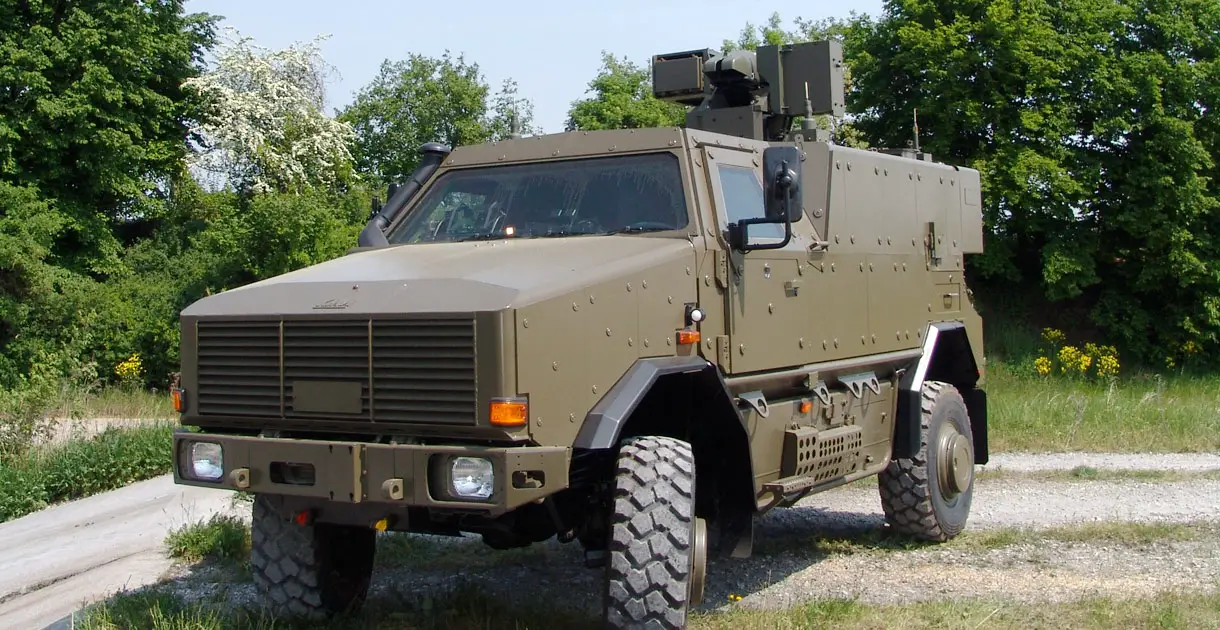On November 16, the Budget Committee of the German Bundestag released funds for the procurement of Dingo 2A4.1 protected command vehicles and additional maritime patrol aircraft P-8A Poseidon. The green light was specifically given for the purchase of 50 protected command vehicles of the Dingo 2 A4.1 type for a total of around 150 million euros. They are financed through the so-called strengthening title, as the Bundeswehr has given its own Dingoes to Ukraine to support the country in its defense against Russian aggression. These vehicles are now being replaced and are scheduled to be delivered to the Bundeswehr in 2026. The Federal Government’s strengthening initiative, Individual Plan 60, supports selected partner states with military material, equipment and training.
The ATF Dingo is a German heavily armored military MRAP infantry mobility vehicle based on a Unimog chassis with a V-hull design, produced by the company Krauss-Maffei Wegmann (KMW). The first prototype of the Dingo 1 was completed in 1995 and the first production Dingo 1 entered service in 2000 with the German Army. It is designed to withstand land mines, rifle fire, artillery fragments and NBC-threats. ATF stands for Allschutz-Transport-Fahrzeug, meaning all-protected transport vehicle in German. It is named after the Australian native dog, the dingo. In September 2022, Germany announced that it would provide 50 ATF Dingos to Ukraine to use in the 2022 Russian Invasion of Ukraine. During the Russian invasion of Ukraine, 4 units were destroyed, 1 was damaged and 1 was abandoned. Textron signed an exclusive deal to produce and market KMW’s Dingo in the United States.

The ATF Dingo has a modular design with five elements: chassis, protection cell, storage space, engine compartment, and bottom mine blast deflector. Its design is lighter and includes an armored chassis with a blast pan instead of the more common monocoque hull found in modern blast resistant vehicles. IBD’s layered MEXAS is used and the windows are angled to deflect blasts and bullets. A tarpaulin is used over the back storage area instead of metal to save weight. The Dingo’s standard armament is a Rheinmetall MG3 7.62 mm machine gun in a remote-controlled turret on the top of the vehicle, borrowed from KMW’s Fennek. The operator sits safely inside the cabin, controlling the weapon with an electro-optical sight with night vision capability.
The ATF Dingo 2 is an advanced version of the Dingo, based on the upgraded Unimog U 5000 chassis with improved protection and more payload. It is offered in two versions, a 3,250 mm wheelbase version (3.5 tonnes payload) and a 3,850 mm wheelbase version (4 tonnes payload) . The Dingo 2 can seat eight personnel. The Dingo 2 entered service in late 2004 after undergoing trials from November 2003-May 2004. Currently KMW is developing the Dingo 2 GFF for the German Army with increased internal volume. The Bundeswehr ordered several hundred fully remote-controlled weapons stations from KMW, for its Dingos and other armored vehicles: the light FLW 100 (for the MG3 or the Heckler & Koch MG4), and the heavy FLW 200 (for the M3M .50 BMG or the HK GMG automatic grenade launcher). The weapons station is controlled by an operator viewing a monitor inside the vehicle.
















